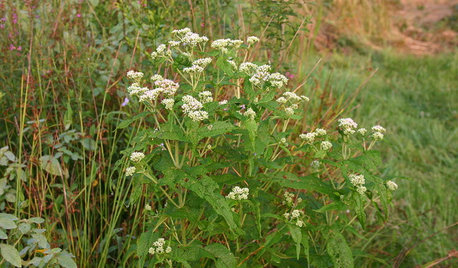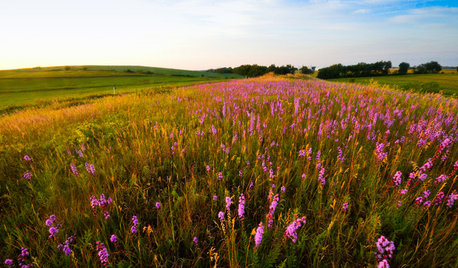Help - when do I plant this?!
oath5
17 years ago
Related Stories

HOUSEKEEPINGWhen You Need Real Housekeeping Help
Which is scarier, Lifetime's 'Devious Maids' show or that area behind the toilet? If the toilet wins, you'll need these tips
Full Story
CONTAINER GARDENSContainer Garden Basics: How and When to Water Potted Plants
Confused about soil moisture, the best time to water and what watering device to use? This guide can help
Full Story
FLOWERS AND PLANTSHelp Monarchs and Other Butterflies by Planting Common Milkweed
Summer-blooming Asclepias syriaca is an important larval host plant for the monarch butterfly and attracts a number of pollinating insects
Full Story
GARDENING GUIDESGreat Design Plant: Common Boneset Helps Good Bugs Thrive
Support bees, moths and butterflies with the nectar of this low-maintenance, versatile and tactile prairie-style plant
Full Story
LANDSCAPE DESIGNNative Plants Help You Find Your Garden Style
Imagine the garden of your dreams designed with plants indigenous to your region
Full Story
GARDENING GUIDESHelp Fuel the Monarch Migration With These 6 Prairie Plants
Try these nectar-rich beauties and help autumn monarchs
Full Story
GARDENING GUIDES8 Unthirsty Plants Help You Save Water in Style
Spend less effort and money on your landscape with drought-tolerant and native plants that liven up your yard
Full Story
GARDENING GUIDESGot Frost-Damaged Plants? How It Happens, and When and How to Prune
Crispy brown leaves are a sure sign that Jack Frost has been to your neighborhood
Full Story
GARDENING GUIDESWhen and How to Plant a Tree, and Why You Should
Trees add beauty while benefiting the environment. Learn the right way to plant one
Full Story






rhizo_1 (North AL) zone 7
oath5Original Author
Related Professionals
Citrus Heights Landscape Architects & Landscape Designers · Lakewood Landscape Architects & Landscape Designers · Suffern Landscape Architects & Landscape Designers · Vernon Hills Landscape Architects & Landscape Designers · Surprise Landscape Contractors · Avocado Heights Landscape Contractors · Danvers Landscape Contractors · El Sobrante Landscape Contractors · Mercedes Landscape Contractors · Raleigh Landscape Contractors · Rosemount Landscape Contractors · Tuscaloosa Landscape Contractors · Uxbridge Landscape Contractors · Glenn Heights Swimming Pool Builders · Huntsville Swimming Pool Buildersrhizo_1 (North AL) zone 7
luis_pr
oath5Original Author
rhizo_1 (North AL) zone 7
oath5Original Author
latami
oath5Original Author
latami
diggingthedirt
luis_pr